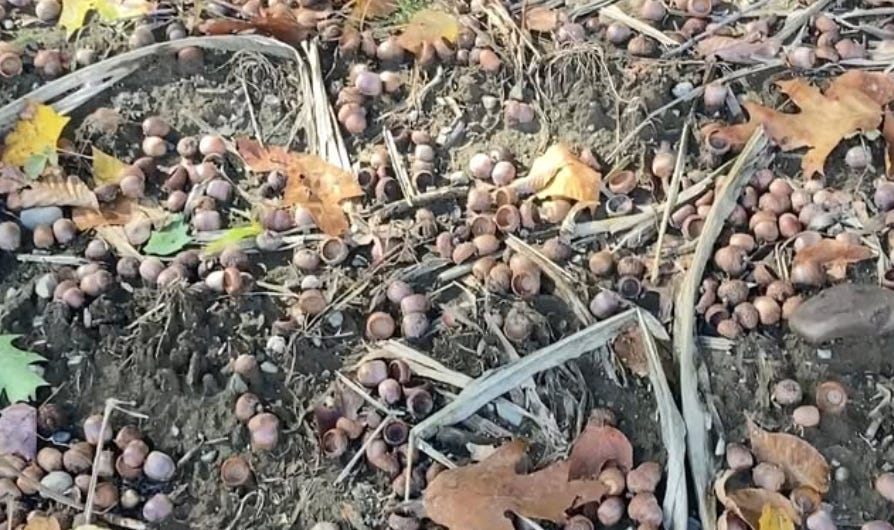A Beech Nut Bonanza This Year Makes for a Great Thanksgiving for Wildlife
The information in this article is based on the 2025 Vermont hard mast crop report from Vermont Fish & Wildlife Department biologists.
According to a recent mast crop survey from biologists, Vermont’s wildlife is heading into the winter with a plentiful food supply. The state saw a “pretty darn good year” for its hard mast crop—the nuts and seeds from trees like beech and oak that are critical for many animal species.
While acorn production was solid, the “real news,” according to the report, is the widespread “beech nut bonanza” across most of the state.
The Beech Nut Bonanza
This year’s beech nut crop was reported as “excellent” in most areas of Vermont. Beech nuts are a high-fat, high-energy food source that is essential for bears, deer, turkeys, and smaller mammals.
Southern Vermont, in particular, led the way with an exceptionally strong crop. The only significant exception noted by biologists was in the Northeast Kingdom, which saw poor beech nut production this year.
Acorn Production: A Mixed but Positive Bag
Acorn production from Vermont’s oak trees was also strong, described as “fair to good” in much of the state.
While there were a few localized “pockets of crop failure,” these were reportedly balanced out by areas with “honest to goodness bumper crops,” such as one documented in Rutland County.
What This Means for Vermont’s Wildlife
The overall abundance of food in the forests has a direct impact on animal behavior. With plenty of high-energy beech nuts and acorns available, many of Vermont’s key species, including black bears, white-tailed deer, and wild turkeys, are less likely to travel in search of food.
Biologists note that this means animals may be seen less frequently in “cut cornfields and other open areas” where they might otherwise forage in a low-mast year.
However, experts caution that this behavior change is not universal. In the specific areas where both acorn and beech nut production was “spotty”—like the Northeast Kingdom—wildlife is still expected to be “on the move looking for other food sources.”
What Happens Next?
With a bountiful mast crop, Vermont’s wildlife is well-positioned for the cold months ahead.
Animal Health: A surplus of high-fat nuts allows animals like bears to enter their dens in good health and helps deer and turkeys build necessary fat reserves for winter survival. This can lead to higher survival rates and healthier populations in the spring.
Animal Movement: For the remainder of the fall, hunters and wildlife watchers may find more success by focusing on hardwood forests rich in beech and oak trees rather than on field edges or agricultural areas.
Human Interaction: In most of the state, the abundant natural food should mean bears are less likely to be drawn to “easy” food sources like bird feeders, unsecured compost, or garbage. However, residents in low-mast areas should remain vigilant.
Biologists will continue to monitor animal health and movement as winter sets in, using this data to understand population dynamics for the coming year.



